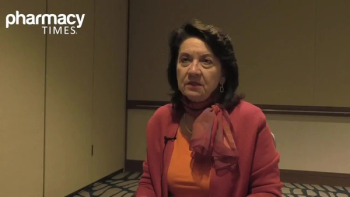
Flu Shot Rates Suboptimal in High-Risk Kids
Even though kids with neurological disorders are at high risk for flu-related complications, they are no more likely to receive annual flu vaccination than healthy children.
Even though kids with neurological disorders are at high risk for flu-related complications, they are no more likely to receive annual flu vaccination than healthy children.
In a recent study published online in Vaccine, researchers surveyed 2138 parents, 1143 of whom had a child or children with at least 1 neurological or neurodevelopmental disorder (NNDD).
The researchers found 47% of all parents surveyed had vaccinated or planned to vaccinate their children. Among parents of children with NNDDs, the rate was only slightly higher at 50%.
“Our research shows that influenza vaccination in children with NNDDs is comparable to vaccination in healthy children—but both rates are suboptimal,” said lead author Michael J. Smith, MD, an associate professor in the University of Louisville Department of Pediatrics and a pediatric infectious disease specialist with University of Louisville Physicians, in a press release. “More education about the need for annual influenza vaccination is needed, both for parents and health care providers.”
In the study, parents who chose not to vaccine their kids were asked about the reasons behind their decision. Among those with children who had NNDDs, 38% expressed concerns about how the vaccine would affect their child, and 32% indicated a lack of trust in the safety of vaccination.
For parents who did vaccinate their kids, the primary motivator was not the presence of an NNDD, but a chronic respiratory condition.
In a separate survey of 412 physicians, 74% acknowledged children with cerebral palsy were at higher risk for flu-related complications, but only 51% and 46% recognized the increased risks for children with epilepsy and intellectual disability, respectively.
Approximately one-third of reported pediatric flu-related deaths in the United States between 2004 and 2012 occurred in children with NNDDs, according to a 2013 study published in Pediatrics.
“The reasons for the increased severity of influenza among these children are uncertain. We do know, however, that an NNDD, intellectual disability, was the most common NNDD associated with pediatric deaths during the 2009 H1N1 flu pandemic,” Dr. Smith said. “A better understanding of the attitudes, beliefs and behaviors that influence flu vaccination of children with NNDDs such as intellectual disability is needed.”
Practice Points
Because more patients are receiving flu shots at community pharmacies, pharmacists can play an important role in increasing influenza vaccination rates among at-risk patients, such as children with NNDDs.
In an exclusive interview with Pharmacy Times, Dr. Smith offered the following counselling recommendations:
- Remind parents who come in for their flu shots that all children also need to be vaccinated, and that children with NNDDs have 2 at-risk conditions: their neurological disorder and their young age.
- Consider sending annual flu shot reminders to patients with children who are prescribed NNDD medications, as research has suggested such reminders can increase vaccination rates among children.
- Refer parents to authoritative sources, such as the US Department of Health and Human Service’s flu website, for statistics and other information about the risks of flu among children with NNDDs.
- While one of parents’ biggest concerns is their children will contract the flu from the flu vaccine, remind them that this is simply not true for both the injection and nasal spray.
- Alleviate additional concerns by going over the most common side effects of the flu shot. For the injection, this includes local pain, redness, and occasionally swelling. For the nasal spray, this includes runny or congested nose, cough, and sometimes sore throat or headache.
“The side effects of annual influenza vaccination are minimal when compared to the symptoms of an actual infection,” Dr. Smith said. “In my opinion, that is the most important take-home point.”
Newsletter
Stay informed on drug updates, treatment guidelines, and pharmacy practice trends—subscribe to Pharmacy Times for weekly clinical insights.

















































































































































































































